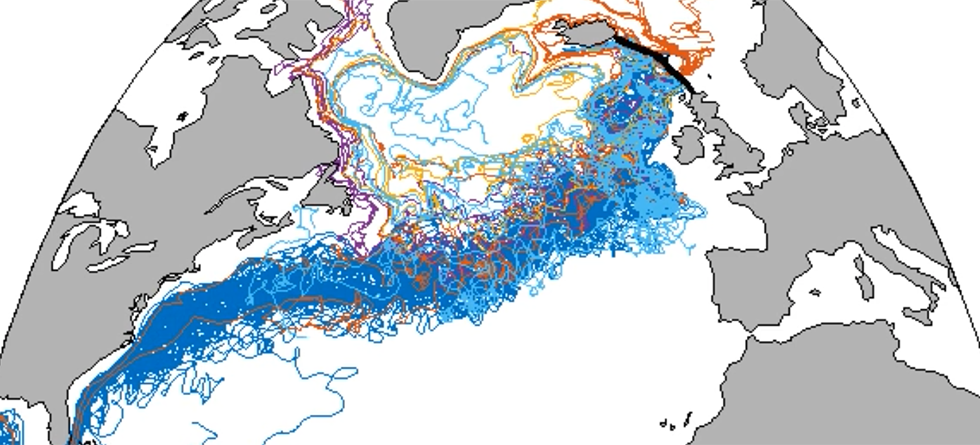Written by Helene Asbjørnsen, Post Doc at the Bjerknes Centre and the Geophysical Institute at the University of Bergen
In our new article, we track 10 million virtual water particles released at the entrance to the Nordic Seas backward in time. This allows us to assess the source regions and pathways of the Atlantic water that ultimately flows into the Nordic Seas and toward the Arctic.
We find that roughly 2/3 of the Atlantic water flowing into the Nordic Seas come from the Gulf Stream, while 1/3 has an Arctic or subpolar origin. Changes in this fraction will influence the temperature and salinity of the Atlantic water inflow. If, for instance, more water comes from the Arctic, the inflow becomes fresher and colder.
The particle trajectory data also allows us to visualize recent shifts in the North Atlantic circulation. We find that the subpolar front has shifted east since 2010, which means that more of the cold and fresh Arctic and subpolar water can reach the Nordic Seas inflow region. This explains, in part, a period of lower temperatures in the Norwegian Sea directly downstream.
Reference
Asbjørnsen, H., Johnson, H. L., & Årthun, M. (2021). Variable Nordic Seas Inflow Linked to Shifts in North Atlantic Circulation, Journal of Climate, 34(17), 7057-7071

